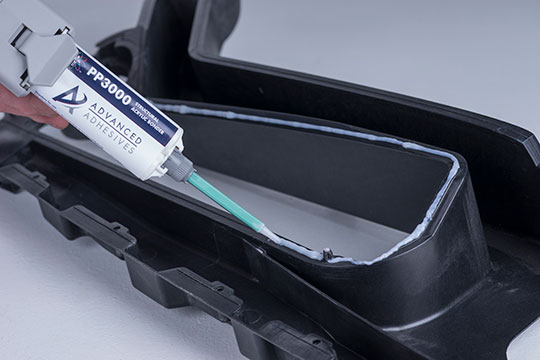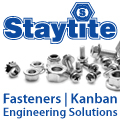
Posted to News on 6th Dec 2022, 16:19
Adhesives can be enabler for transition to new materials

As design engineers look to improve the recyclability of their products or reduce weight, they are looking to make increased use of plastics, composites, lightweight metals. Adhesives can be a key enabler in the transition to these new materials, says Graham Crozier, managing director of Advanced Adhesives.
As his company celebrates 25 years of solving the most challenging applications for end users across a multitude of industries, Crozier says: “We are seeing a period of rapid change across all of the industries that we serve.
“Many customers are looking to reduce weight in the products they are bringing to market, or to increase performance or improve aesthetics. Traditional joining technologies such as riveting or welding are either no longer meeting their requirements or are unsuitable for the materials they want to use. They are coming to Advanced Adhesives in search of a bonding solution.”
In its 25 year history, Advanced Adhesives has tackled huge numbers of applications where at first glance at the design specification might have suggested no possibility of any joining solution, let alone adhesive bonding. “A good example was a 70m diameter composite fish tank to breed salmon, bonding composite to composite in a structure of that size that had to be stable against huge forces of water pressure.”
Then there was a bonding solution for the glass in the buildings at Heathrow Terminal 5, which had to be resistant to terror attack. We were informed by the architects “It’s not the bomb blast that does the real harm; it’s the flying shards of glass that kill,” says Crozier. “We were among a number of companies asked for a bonding solution that would hold the glass together and not shatter and spread glass shards throughout the area if there was an explosion – ours was the only adhesive that passed the test.”
Today, in industries such as aerospace and automotive, as well as many other sectors looking to take advantage of new materials, the challenge is not just finding alternative joining technologies for companies that want to move away from welding or riveting, but also to find bonding solutions for material combinations that have traditionally proved challenging to bond.
“Bonding composites to composites, or metals to metals, or metals to plastics, or making use of recyclable plastics can prove problematic, but Advanced Adhesives has built its reputation and built its business on being a problem solver,” says Crozier. “We receive calls from designers and engineers who have been recommended to speak with us saying ‘I’ve been told if you guys can’t solve my problem, no one can’.
“Customers come to us precisely because they need a solution to something that can seem almost impossible. But we are adhesive experts, and we’ve yet to find a bonding challenge where we couldn’t formulate an appropriate solution.”
Advanced Adhesives’ 25 year history provides ample proof of this claim, and former aerospace engineer and adhesive expert Crozier is rightly proud of the company’s development and growth. Founded in 1996, the company has witnessed rapid growth in recent years as application requirements themselves have developed, and it has grown year-on-year for the last decade plus.
This growth has enabled ongoing investment in equipment, facilities and staff. “We’ve built an unrivalled reputation as a problem solver working with today’s advanced materials, and part of that success comes from maintaining a close eye on the materials developments of tomorrow,” says Crozier.
A key aspect of the company’s investment has been its Applications Centre. “This is an enviable addition to our business, where we not only offer adhesive testing on customers’ components, but also offer the services of testing bonded components thereafter. We have strength testing, ageing, impact testing, hot and cold resistance on the components being tested, and I feel this is a must in the sale of our products. Customers need to be assured that our adhesives are going to operate within the scope of their product, but also have the longevity to survive for the lifetime of the product they are producing with our adhesive.”
Crozier concludes: “We constantly pursue innovation, enabling customers to take full advantage of new materials technologies, and making them more profitable in the process.”
Architectural House
Plummer Street
NE4 7AB
UNITED KINGDOM
+44 (0)191 272 2982





